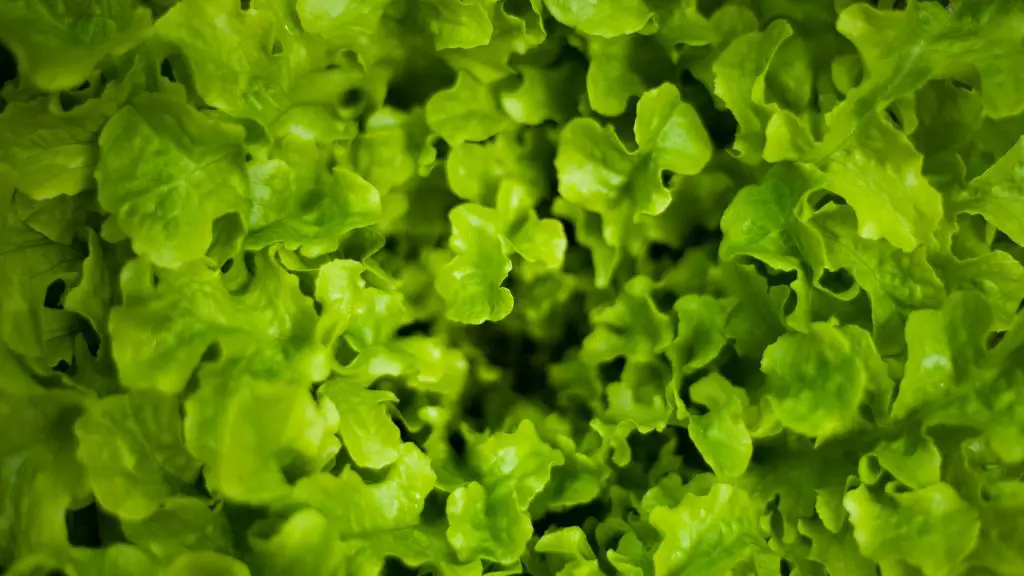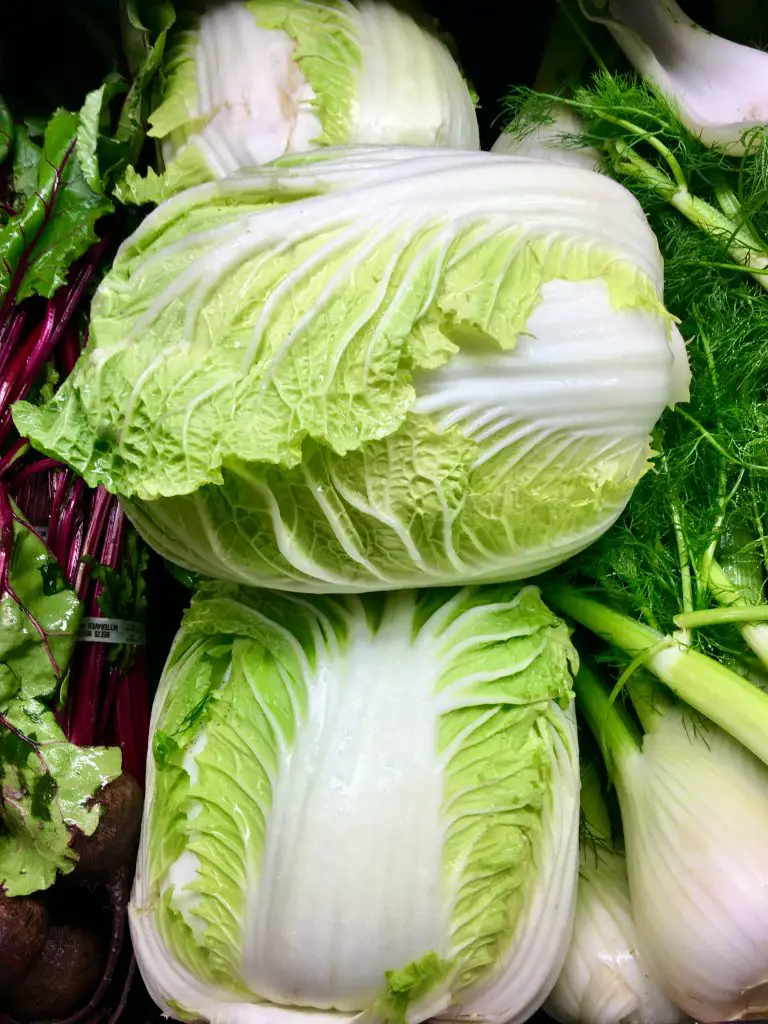How Can You Tell The Difference Between Cabbage And Lettuce? Cabbage and lettuce are both popular items at the produce sections of the supermarket but due to their similar color and shape, they are sometimes difficult to tell apart. So how can you tell the difference?
Confusion between Cabbage and lettuce typically only occurs when referring to iceberg lettuce and green cabbage. One of the easiest ways to tell the plants apart is to look at the leaves closely. Cabbage leaves are waxy in nature and have clear visible veins that extend throughout the leaves whereas iceberg lettuce tends to have a central vein at the base of the leaf that does not extend to the outer tips of the leaf.
Another common way to tell the difference is by smell, Cabbage is generally pungent whereas iceberg lettuce has almost no smell. Cabbages also tend to be much more densely packed which means cabbages of a similar size will tend to be heavier.

Are Lettuce and Cabbage Related?
Lettuce and cabbage are not related to each other. Lettuce is an annual plant of the daisy family. It’s most often used as a fresh leafy vegetable, although stems and seeds are also edible. It is often used in fresh salads though it is also commonly used in sandwiches, burgers, or wraps and is occasionally grilled.
Whereas Cabbage is a member of the mustard family and the Brassica genus. The cabbage is actually a cultivar of the species, Brassica oleracea, which has a surprisingly wide number of cultivars that take many familiar forms.
Most people are surprised to learn that broccoli, kale, brussels sprouts, kohlrabi, and cauliflower are all actually the same species as they can be interbred. This wide variety of cultivars has been progressively developed over time from the wild form of cabbage which is sometimes referred to as colewort or field cabbage.
Are There Other Forms Of Cabbage?
There is a huge number of different cultivars of cabbage that have been developed as a result of the broad geographical regions that the plant has been grown in over an extended period of time. The numerous varieties can be classified into four main types; Green, Red, Savoy, and Napa.
Green Cabbage is the most common variety and as discussed earlier in the article looks similar to Iceberg Lettuce. The green cabbages are round in shape and vary in color from dark green to very light green. The leaves are tightly bound together to create a heavy dense head.
Red cabbage looks similar to green varieties and can largely be used interchangeably though cooked red cabbages will muddle other ingredients’ colors and when cooked in an alkaline substance, turn blue itself. To read more about this click here.

It is noted that one of the components linked with this effect, called Anthocyanin, is useful as it can be used as a pH indicator. To learn more about this click here.
Savoy Cabbage varieties are green in color like the green cabbage except that they have crinkled leaves that are similar in structure to Tuscan kale. Savoy is the common name for a group of leafy vegetables originating from the Savoy region in Italy. The earliest record of these varieties dates back to the 1500s.
The Cabbage is very similar in nature to other varieties mentioned as it may be eaten raw, or cooked. Cooked savoy cabbage maintains its texture longer than other varieties of cabbage due to the structure of its leaves.
Napa Cabbage, also known as Chinese Cabbage, unlike other forms of cabbage, has a distinctly different shaped head. It is oblong in shape and generally has leaves that in most cases are light green to yellow in color. These varieties have relatively fine leaves that are mild in flavor.
To learn more about individual varieties try visiting our vegetable database which has over 200 hundred varieties listed. To make it easier to find just to right cabbage variety the database can be searched by type and whether it is an early or late variety.
As well as being classified by type cabbages can also be grouped based on when they are ready to harvest. Spring Cabbages, also known as Late Varieties, are slow growing. They are sown in Mid-Summer for harvesting in the following Spring. Summer Cabbages, also known as Early Varieties are rapid growing varieties sown in Spring for a late Summer harvest. While Winter Cabbages, also known as Mid-Season Varieties, display a moderate rate of growth and are typically sown in Spring for an Autumn to Winter harvest.
With a wide variation in harvest periods, it is possible to have Cabbage available year-round if you are careful with your selection of varieties and planting times. To purchase seeds we recommend trying seeds now as they have a wide range of varieties and are cheaper to buy from than most other seed suppliers.
Are There Other Forms Of Lettuce?
There are numerous lettuce varieties like cabbage. They can be divided up into 4 major groups, Crisphead, Romaine, Loose Leaf, and Butterhead varieties.
Crisphead lettuce is a type of lettuce that can be distinguished based on its size. Iceberg lettuce is the most well-known variety of this kind and features crisp leaves with a mild taste. As opposed to other types of lettuce which grow in a more upright dome-shape.
The other main variety is Romaine lettuce which is also known as Cos lettuce in some countries. Romaine has an oblong shape and a tougher texture for chewing due to its central stem. This variety is a staple in salads but you may find this occasionally grilled and as a crunchy addition to sandwiches.
The loose-leaf lettuce unlike the crisphead or romaine types do not form into a main head and generally make more tender leaves than headed varieties.
However, because of the continuous production of leaves, these cultivars are capable of being harvested over a period of time rather than all at once. These variety are evergreen in appearance and are often referred to as ‘cut and comes again.’
Additionally, loose-leaf varieties are much mellower in flavor and generally nutty than their tightly rolled counterparts. However, the red varieties tend to be more bitter in flavor.
Butterhead lettuce varieties which are a subset of loose-leaf varieties have soft smooth-textured and thin green leaves which are much more tender than other varieties. Butterhead varieties whose taste is milder, sweeter, and pleasant to the palate are the pick of the varieties for me.

